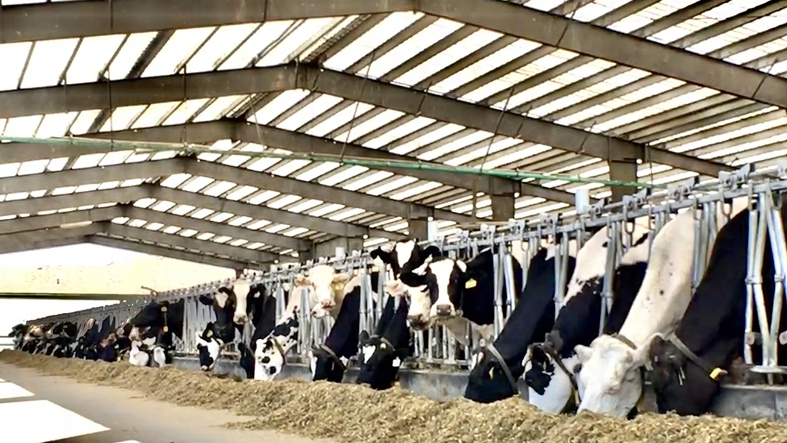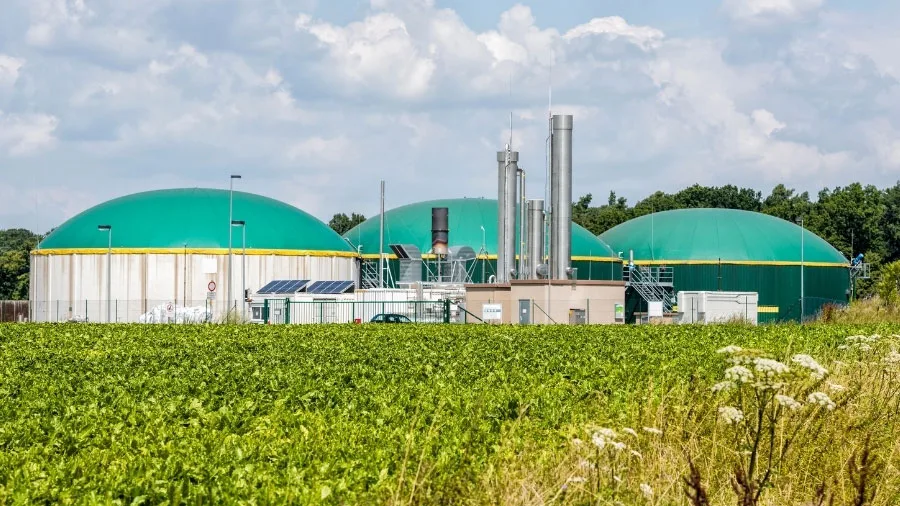Want to know the right number of cows to keep your dairy farm profitable? Dive in to find out the ideal herd size for success.
Summary: A dairy farm’s success and profitability depend on its herd size. A herd of 200 to 500 cows balances operational efficiency and resource management, resulting in a more sustainable and profitable organization. Larger herds can produce milk at a cheaper cost per unit by spreading fixed expenses among more cows. Smaller farms with less than 500 cows have limited negotiating strength and workforce efficiency difficulties. Larger herd farms benefit from efficient resource allocation, such as hiring specialized staff, automating operations, and negotiating better bargains on supplies and feed. Research shows that dairy farms with over 200 cows are more profitable, often reducing costs per unit of milk produced. A diversified strategy is needed to achieve peak productivity in today’s competitive economy.
- Herd sizes between 200 to 500 cows strike a balance between operational efficiency and resource management.
- Expanding herd size can lower production costs per unit of milk by spreading fixed costs over more cows.
- Smaller dairy farms face challenges with bargaining power and labor efficiency.
- Larger farms benefit from specialized staff, automation, and better supply negotiations.
- Research indicates greater profitability in dairy farms with over 200 cows by reducing costs per milk unit.
- Diversified strategies are essential for peak productivity in a competitive economy.

Have you ever wondered how many cows it takes to run a thriving dairy farm? Many dairy producers are concerned about this issue. Running a dairy farm now is not as simple as it once was. The fundamental concepts remain the same—feeding, milking, and caring for your herd—but the economics have changed dramatically. Have you ever wondered whether growing your herd may be the key to maintaining your business? Strategic growth is the only way to remain profitable in today’s competitive industry. Without expansion, many farms cannot keep up with escalating expenses and shifting milk prices. So, what is the magic number? How many cows do you need to keep your dairy farm going and thriving? Explore compelling data and professional guidance to find the most feasible solution.
Have You Ever Wondered What the Magic Number Is for the Perfect Herd Size on a Dairy Farm? Let’s Dive into the Heart of This Matter.
Have you ever wondered what the magic number is for the optimal herd size on a dairy farm? Let’s go to the core of the subject. Herd size is not an arbitrary number but a critical predictor of your farm’s profitability. The fundamental logic is indeed simple: more cows equals more milk. But is it that simple?
Consider this: if you have too few cows, you may struggle to fund your operational expenditures. For example, John in Connecticut recognized that profitability was a continual problem for his 45-cow herd. When the herd size is too small, fixed costs such as equipment and infrastructure become disproportionately expensive per cow. This makes it challenging to break even, much alone prosper.
So, where do you locate that sweet spot? According to experts, a herd size of 200 to 500 cows often achieves a fair balance between operational efficiency and resource management. At this level, economies of scale benefit you without overloading your managerial capacities. It’s crucial to determine your ideal herd size to ensure your farm’s success. What do you think your ideal herd size would be?
Why Economies of Scale Make Bigger Herds More Profitable
Economies of scale are one of the most essential reasons herd size matters. Larger farms may frequently produce milk at a cheaper cost per unit by spreading their fixed expenses among more cows. Consider dividing the cost of milking equipment, feed storage, and labor among more cows. This may significantly improve your bottom line, resulting in a more sustainable and lucrative organization.
Consider this: if you have a herd of less than 500 cows, your per-unit expenditures will likely be more significant. According to current research, dairy farms with less than 500 cows have limited negotiating strength and workforce efficiency difficulties. But why? It’s simple: the fewer cows, the higher the expenditures per cow. A land base that does not match your herd size might result in inefficiencies that reduce your profit margins.
Larger herd farms, on the other hand, benefit from more efficient resource allocation. Labor may be planned more effectively, and jobs can be simplified. For example, a farm with 1,000 cows may hire specialized staff, automate operations, and negotiate better bargains on supplies and feed, all of which result in cost savings. For this reason, farms with 500 or more cows provide the majority of milk in the United States. Large farms may use their scale to increase profitability and sustainability.
Research Reveals: Why Dairy Farms with Over 200 Cows Are a Goldmine of Profitability
A University of Wisconsin research found that dairy farms with more than 200 cows are more lucrative than smaller ones. Their study shows that economies of scale benefit larger dairy farms, frequently reducing costs per unit of milk produced. This link between herd size and profitability is vital, particularly for dairy producers considering expanding their herds.
Furthermore, dairy farms with 200-500 cows often find a balance between sustainable herd size and profitability. These medium-sized farms benefit from improved efficiency and market placement, helping them to prosper in the uncertain dairy market. For example, they often benefit from increased negotiating power with suppliers and purchasers, more efficient labor management, and higher product marketability.
This is because more giant farms may benefit from bulk purchases, more efficient labor utilization, and more access to technology. By harnessing these advantages, businesses may save expenses while increasing production, resulting in a more sustainable and lucrative organization. More giant farms may negotiate better pricing for feed, equipment, and other inputs when purchased in bulk to remain competitive. Increased labor efficiency implies fewer workers per cow, immediately reducing labor expenses. Furthermore, having access to cutting-edge technology implies better herd management and milk production procedures, resulting in higher-quality outputs and increased marketability.
Ever Considered the Idea That Increasing Milk Production Per Cow Might Be a Game-Changer for Your Dairy Farm?
Have you ever thought about how boosting milk output per cow may benefit your dairy farm? Instead of growing your herd, increasing the milk supply might be a more efficient option. Did you know that the typical cow in the United States produces around 23,000 pounds of milk each year? [USDA link]. What if you could get that number higher? Consider the possibilities: fewer animals to care for and less area required for grazing and feeding. This not only reduces running expenses but also makes it simpler to monitor and maintain each cow’s health and reproductive efficiency. By improving the efficiency of your present herd, you may be able to reduce these expenditures dramatically, perhaps increasing profitability.
However, it is not just about output statistics. According to research, extending the calving interval reduces the number of lactating cows and net operational revenue for each level of desired milk output. Effectively controlling your herd’s reproductive health is critical. For example, Bill, who runs a herd in Georgia with an average weight of 19,585 pounds per cow, discovered that maximizing the days to first service and lowering the average days open may greatly enhance overall output. Have you considered how much you pay for veterinarian care, feed, and labor? Smaller dairies have thrived by boosting efficiency via cost-cutting, debt reduction, and budgeting.
In today’s competitive economy, attaining peak productivity requires a diversified strategy. This involves enhancing milk output and heifer retention rates. In the baseline situation, optimum retention at 73% resulted in a 6.5% cheaper net cost of raising than keeping all heifer calves. So, before contemplating herd growth, ask yourself: Have I maximized the potential of my present herd? You may increase profitability without an enormous herd’s added effort and expenditures.
Expanding Your Herd Isn’t Without Its Challenges: Are You Ready?
Expanding your herd is not without its obstacles. You’ll need additional land, food, and labor. Larger herds might cause more significant health problems and require more advanced management techniques. Are you prepared to take on these challenges?
Let’s start with land. An enormous herd requires a more extensive base—roughly 1.5 to 2.0 acres per cow. Do you have enough room for that? If you don’t, you may find yourself in a difficult situation. Remember that your cows need great grass to produce quality milk. Then there’s the matter of labor. More cows equal more work—milking, feeding, cleaning, health checks; you name it. Have you considered how you would manage the rising labor demand? Hiring additional employees or investing in automation may be required to keep things operating smoothly.
Health concerns cannot be disregarded either. More cows increase the chance of illness spreading across your herd. Are you confident in your herd management techniques? Effective health management is essential for keeping a productive herd. Scaling up necessitates sophisticated management approaches, such as using technology for herd management and continuously evaluating results. So, are you ready to dive in and take the plunge for growth?
Feeling the Squeeze from Market Fluctuations? Here’s How to Buffer Your Dairy Farm
The dairy business is no stranger to market volatility and shifting milk prices. Have you ever checked the current milk prices and held your breath, waiting to see whether they’d rise or fall? It’s a rollercoaster that may significantly affect your bottom line. Even the most efficient producers might feel the pressure when milk prices drop, prompting them to reduce expenses or devise new tactics to remain afloat. When prices rise, there is a rush to capitalize on the profits, with some even contemplating extending the herd.
How can you prepare for the inevitable fluctuations? One crucial technique is diversity. You may lessen the shock of price fluctuations by not placing all your eggs (or milk) in one basket. For example, some farmers have shifted to organic produce or added value by producing dairy products such as cheese or yogurt. Consider this: a well-diversified portfolio is essential not just for stock investors but also for dairy producers. Another strategy is to make your operations more efficient. This ranges from improved pasture management to boosting your herd’s genetics for increased output. Sarah Flack, a consultant specializing in grass-based and organic livestock production, argues that “innovative grazing techniques can significantly boost both land and livestock performance.”
Finally, financial planning strategies such as hedging and futures contracts should be examined. While they may seem complicated, they are critical instruments for locking in pricing and protecting against volatility. The goal is to employ financial tools to provide a more consistent revenue stream, even when market prices are unpredictable. It’s similar to holding an insurance policy for milk prices. Understanding and responding to market circumstances is more than survival; it’s about converting obstacles into opportunities. So, the next time you see milk costs rise or fall, you’ll be prepared to deal with the ups and downs.
As You Contemplate Expanding Your Herd, It’s Crucial to Weigh the Pros and Cons Carefully
When considering growing your herd, it’s critical to thoroughly assess the advantages and downsides. First, do a complete cost-benefit analysis to understand the financial ramifications. This study will determine if the increased income from an enormous herd balances the expenditures of more feed, labor, and equipment.
Consultation with agricultural experts or extension agencies may provide vital information. These professionals may give specialized advice based on your farm’s conditions, allowing you to make more informed choices. Seek help from organizations like the National Institute of Food and Agriculture’s Extension Services or your local agricultural extension office.
Consider your infrastructure. Do you have the necessary space and infrastructure to sustain an enormous herd? Expanding your herd may need improvements to your barns, milking parlors, and storage facilities. Don’t forget manure management systems, which may need scalability to handle more waste.
Evaluate your labor requirements. A larger herd requires more hands on deck. Determine if you have enough employees or whether more are needed, considering labor expenses and training needs.
Keep track of your feed resources. Growing your herd will raise feed needs, maintaining a consistent and dependable feed supply. Consult a feed nutritionist to optimize the diet of the enormous herd, which may boost milk output and general animal health.
Financial planning is crucial. Secure appropriate funds for the expansion. Investigate grants, loans, and other financial aid opportunities for dairy producers. A solid financial strategy helps reduce risk and enable a smoother transition.
Finally, embrace technology. Modern dairy farming technology may boost efficiency and output. Automated feeding systems, robotic milking equipment, and herd management software may make maintaining an enormous herd easier and less labor-demanding.
Expanding your herd is a significant move, but with proper planning and help, you may boost your dairy farm’s profitability and sustainability.
The Bottom Line
The optimal herd size for a dairy farm depends on resources, management competencies, and market conditions. Take the time to thoroughly analyze your alternatives and create a strategy to put you up for long-term success. So, how many cows will you need to maintain your dairy farm profitable? The solution may be more complicated than you realize, but with the appropriate approach, you may discover the sweet spot that works for you.















